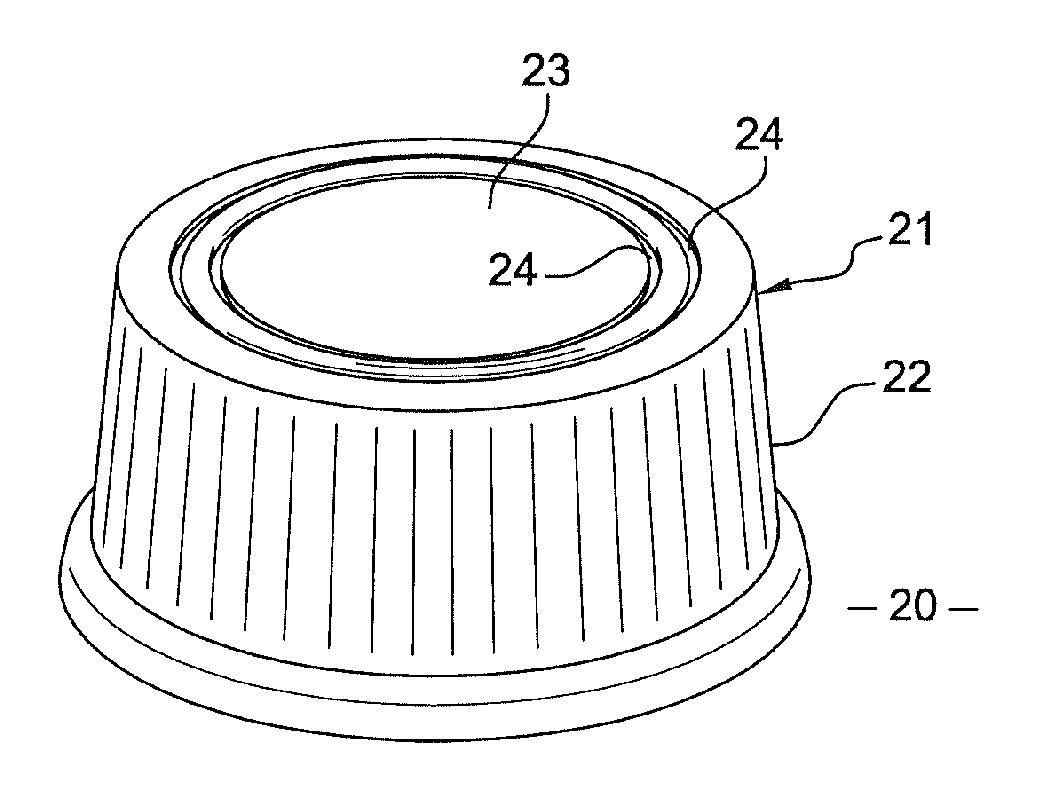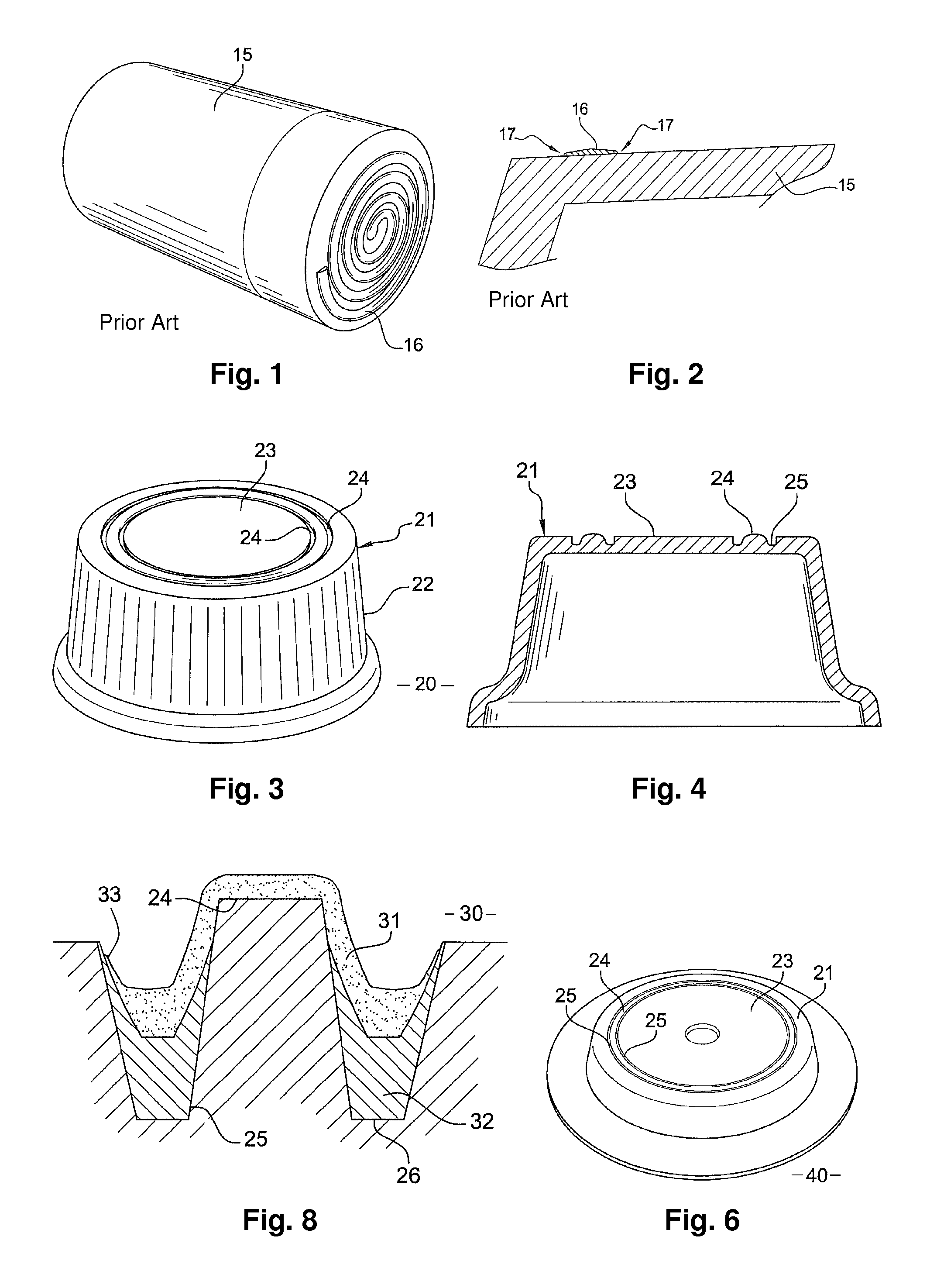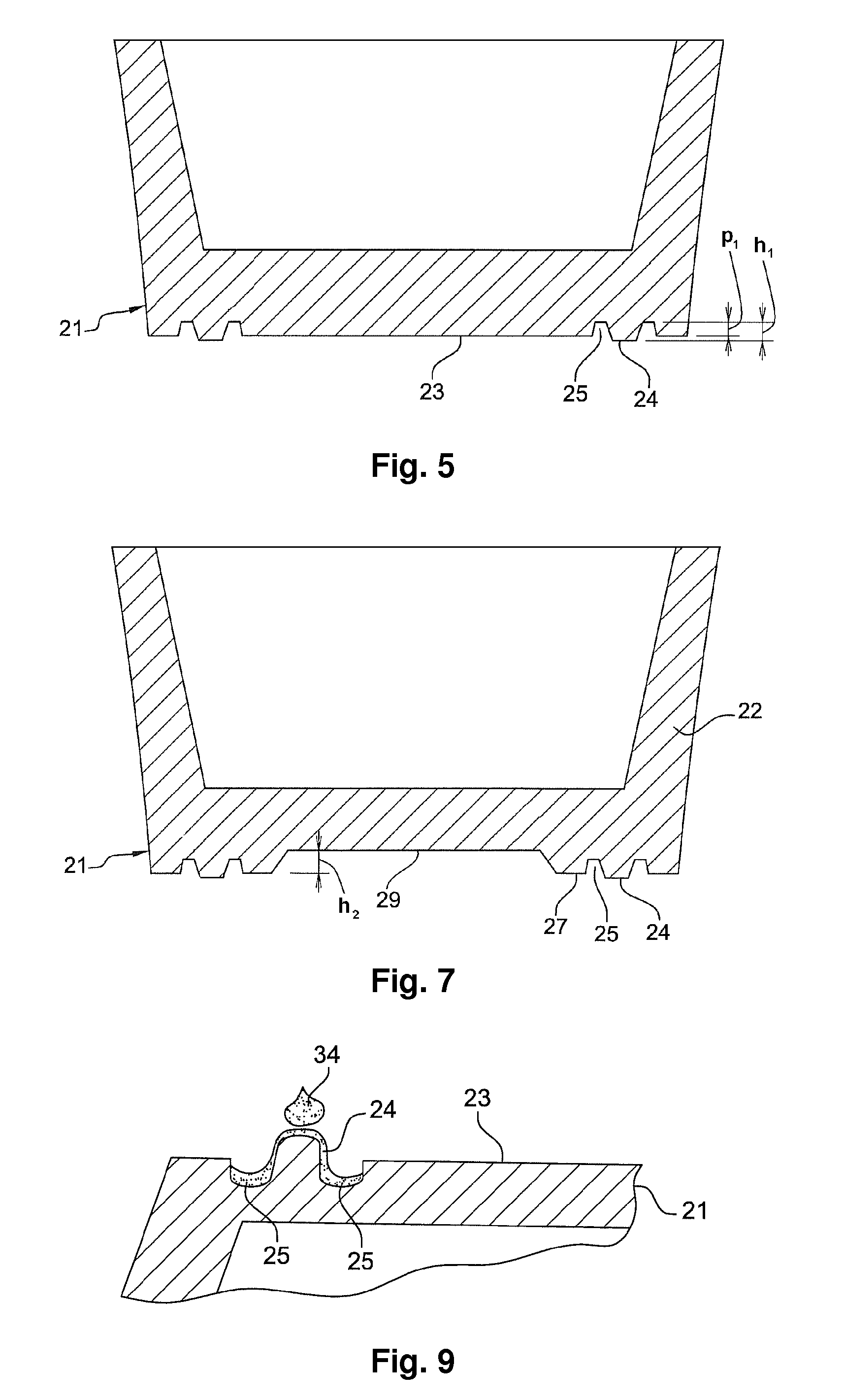Non skid container
a container and non-skid technology, applied in the field of non-skid containers, can solve the problems of high container fall risk, fixed container on the dinner plate, and high risk of container skid, and achieve the effects of reducing the risk of loss of cohesion, good solidity, and good resistan
- Summary
- Abstract
- Description
- Claims
- Application Information
AI Technical Summary
Benefits of technology
Problems solved by technology
Method used
Image
Examples
Embodiment Construction
[0041]In the description, the same numerical references indicate throughout the Figures identical or functionally similar elements.
[0042]FIG. 3 schematically represents a perspective view of a container 20 for manufacturing an antiskid container according to an embodiment of the invention. In the following description, the terms “horizontal, vertical, height . . . ” are to be understood by considering that the bottom of the container 20 is substantially arranged in a horizontal plane.
[0043]The container 20 can be a hollow utensil intended to contain a liquid, gas or solid substance. It can be also a dinner plate. This container 20 can have various shapes and dimensions. The container 20 can be made of porcelain, earthenware, glass-ceramic material, sandstone, terra cotta or any other types of ceramic material. The container 20 can also be made from glass. In the remainder of the description, it is considered that the container 20 is made of a ceramic material.
[0044]In the example in...
PUM
 Login to View More
Login to View More Abstract
Description
Claims
Application Information
 Login to View More
Login to View More - R&D
- Intellectual Property
- Life Sciences
- Materials
- Tech Scout
- Unparalleled Data Quality
- Higher Quality Content
- 60% Fewer Hallucinations
Browse by: Latest US Patents, China's latest patents, Technical Efficacy Thesaurus, Application Domain, Technology Topic, Popular Technical Reports.
© 2025 PatSnap. All rights reserved.Legal|Privacy policy|Modern Slavery Act Transparency Statement|Sitemap|About US| Contact US: help@patsnap.com



